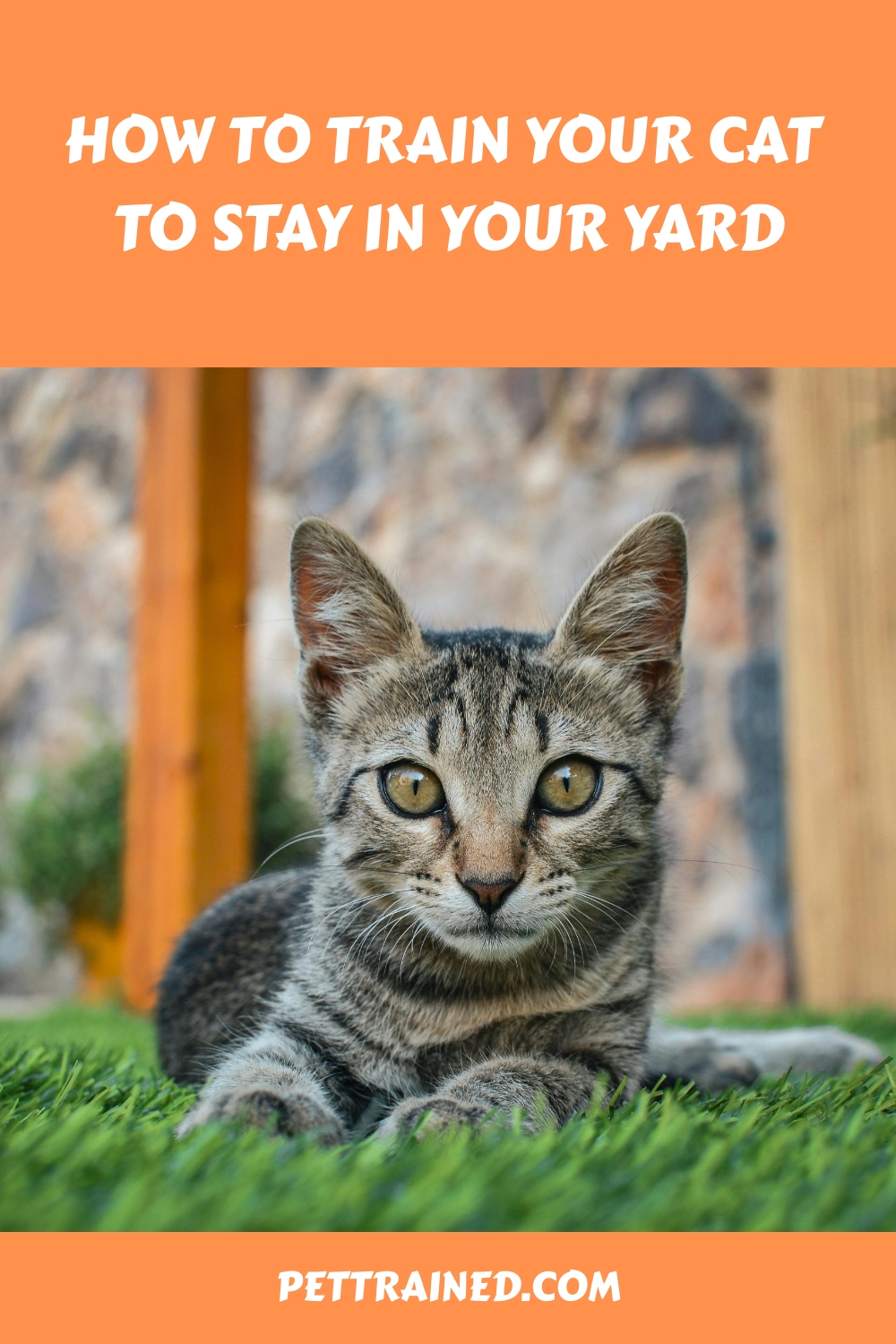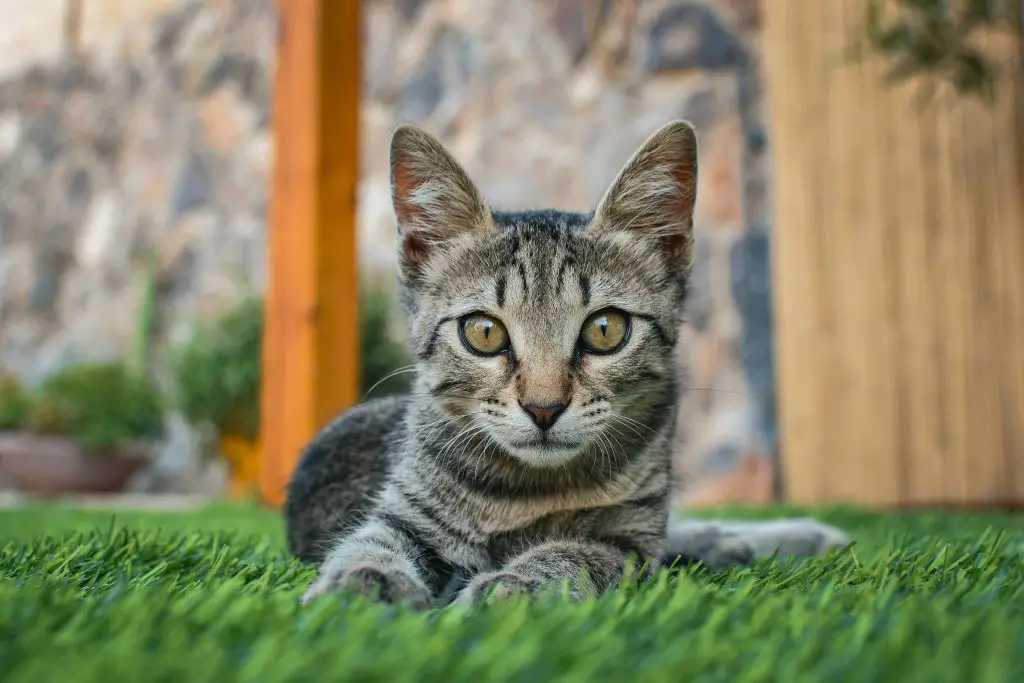
Assess your yard for potential escape routes and dangers. Set up sturdy fencing or enclosures using materials like wood or metal, and consider adding coyote rollers or netting for extra security.
Incorporate cat-friendly plants such as catnip and cat grass to make the yard more enticing. Use a comfortable leash to train your cat, guiding them around the yard and using positive reinforcement techniques like clicker training and treats.
Stay patient and consistent during training sessions, always rewarding good behavior. Keep a close watch on your cat’s actions and adjust your methods as needed for a safe outdoor experience.
There’s always more to discover in ensuring your furry companion’s safety. See also 25 Cat Facts For Cat Owners.
Table of Contents
Key Takeaways

- Check for any potential escape routes or hazards to ensure cat safety in the yard.
- Consider setting up cat enclosures or specialized fencing to prevent any climbing or jumping adventures.
- Adding some cat-friendly plants can keep your cat entertained and satisfy their natural instincts.
- Get your cat used to a leash with gradual boundary training and lots of positive reinforcement.
- Consistent clicker training and treat rewards will help encourage your cat to stay close by.
Assess Your Yard
Assess your yard thoroughly to spot potential escape routes and hazards for your cat. Look for gaps in fences, low-hanging branches, or objects that could aid their adventurous spirit.
This post contains affiliate links. However all the information provided on this site are my own honest opinions. See more in Disclaimer.
Walk the perimeter and imagine your cat’s curiosity leading them astray. Keep an eye out for toxic plants, sharp objects, and tight spaces that may pose a risk.
Understanding your cat’s behavior will help you create a safe space they can enjoy.
Install Physical Barriers
To help your feline friend stay safely in your yard, first select fencing that stops climbing or jumping.
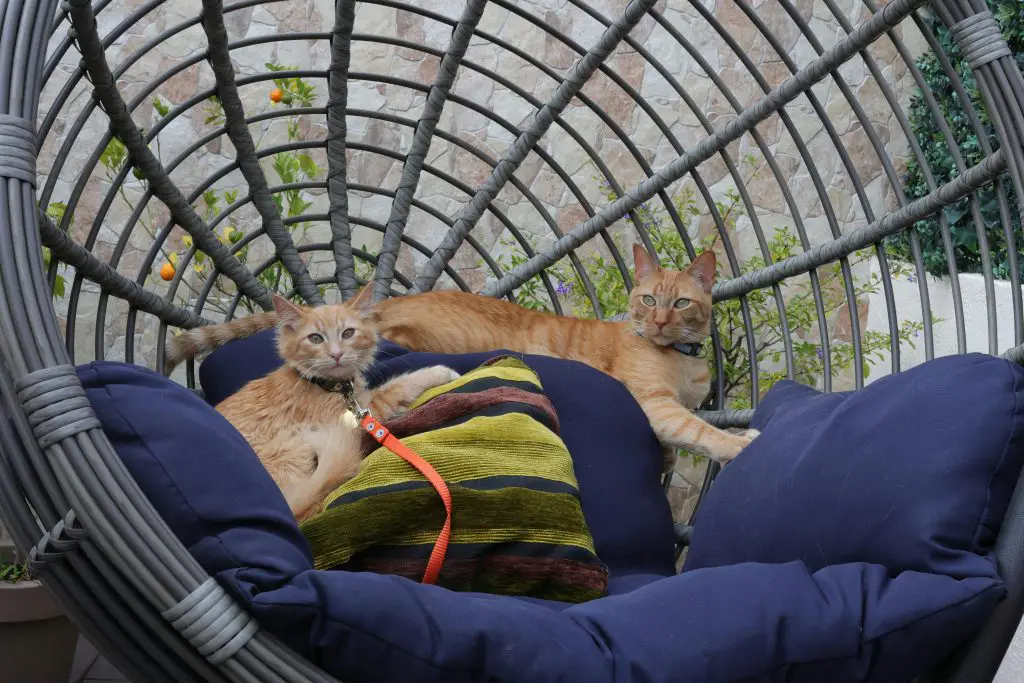
Consider adding cat enclosures for a secure outdoor area.
For extra protection, think about using coyote rollers or netting to deter escape attempts.
Choose Suitable Fencing
When selecting the right fencing for your cat, consider a height of at least six feet to prevent easy scaling. Wood is sturdy but pricey, vinyl is low-maintenance, and metal like chain link is durable and budget-friendly.
Also See:
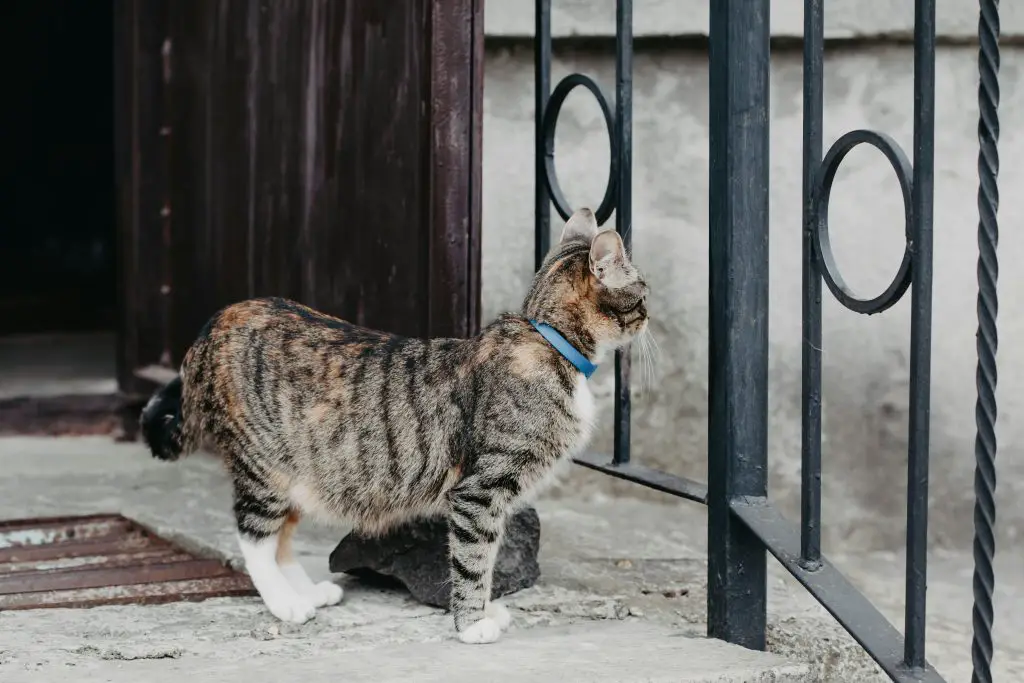
Add a curved topper or angled mesh netting for extra security against escape attempts. Check for gaps at the base and reinforce with chicken wire to keep your feline friend safe and sound in your yard.
Install Cat Enclosures
Cat enclosures are a fantastic way to ensure your feline friend stays safe while enjoying the outdoors. By providing a controlled environment, your cat can play outside without the worry of wandering off or encountering dangers.

When setting up an enclosure, consider adding vertical space and climbing structures for your cat to explore. Cats love to climb and perch, so incorporating shelves, ramps, and platforms can keep them engaged and happy.
This not only encourages physical activity but also taps into their natural hunting instincts.
Make sure the enclosure is made from sturdy materials to withstand your cat’s curiosity. The mesh or netting should be tear-resistant, and any openings should be small enough to prevent escape.
Supervised time in the enclosure allows you to monitor your cat’s behavior and ensure they’re adjusting well. This not only promotes safety but also strengthens your bond by sharing outdoor moments together.
Use Barrier Enhancements
Enhancing your yard with physical barriers is a great way to keep your cat safe and secure. Here’s how you can do it:

- Cat-Proof Fencing: Install a cat-proof fence or netting that angles inwards to discourage climbing and jumping.
- Roller Bars: Attach roller bars or oscillot systems that spin to deter cats from climbing over the fence.
- In-Ground Barriers: Bury chicken wire or hardware cloth along the base of the fence to prevent digging.
- Visual Deterrents: Use reflective tape or motion-activated sprinklers to startle and discourage your cat from approaching the fence.
Combine these barriers with indoor solutions and training aids for a well-rounded approach. Also see 9 Things You Should Never Do to Your Cats.
Use Cat-Friendly Plants
Enhance your cat’s outdoor experience by adding cat-friendly plants to your yard.
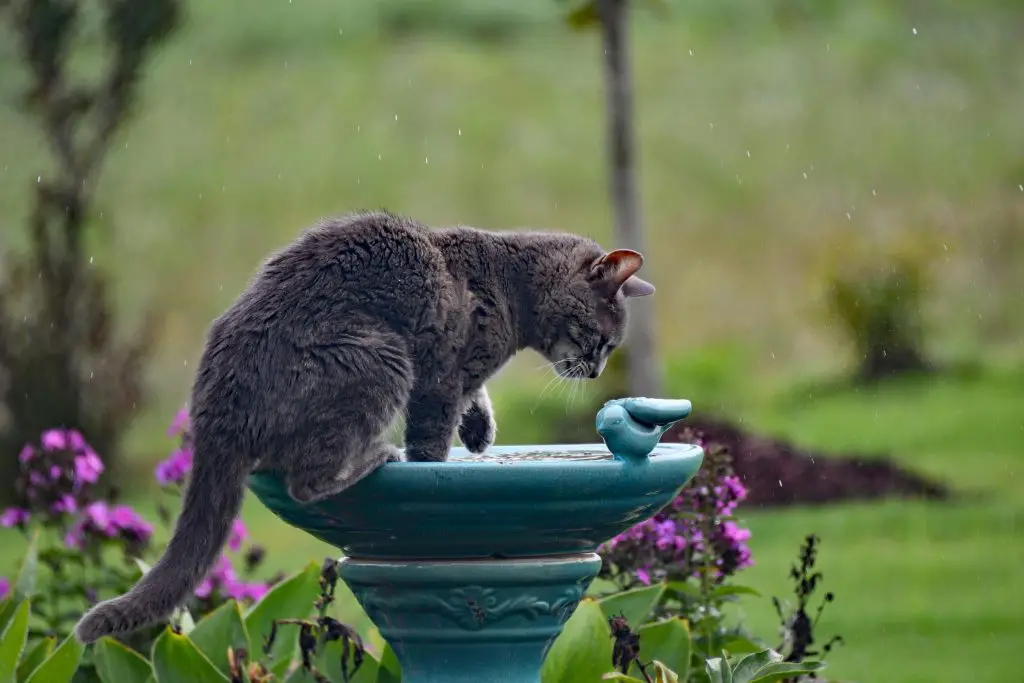
Catnip is a top choice, with its enticing scent and euphoric effect keeping your cat entertained.
Valerian and cat thyme also offer similar benefits.
Tall grasses like lemongrass and cat grass provide both visual and physical stimulation, satisfying your cat’s instincts to hide, pounce, and chew.
Train With a Leash
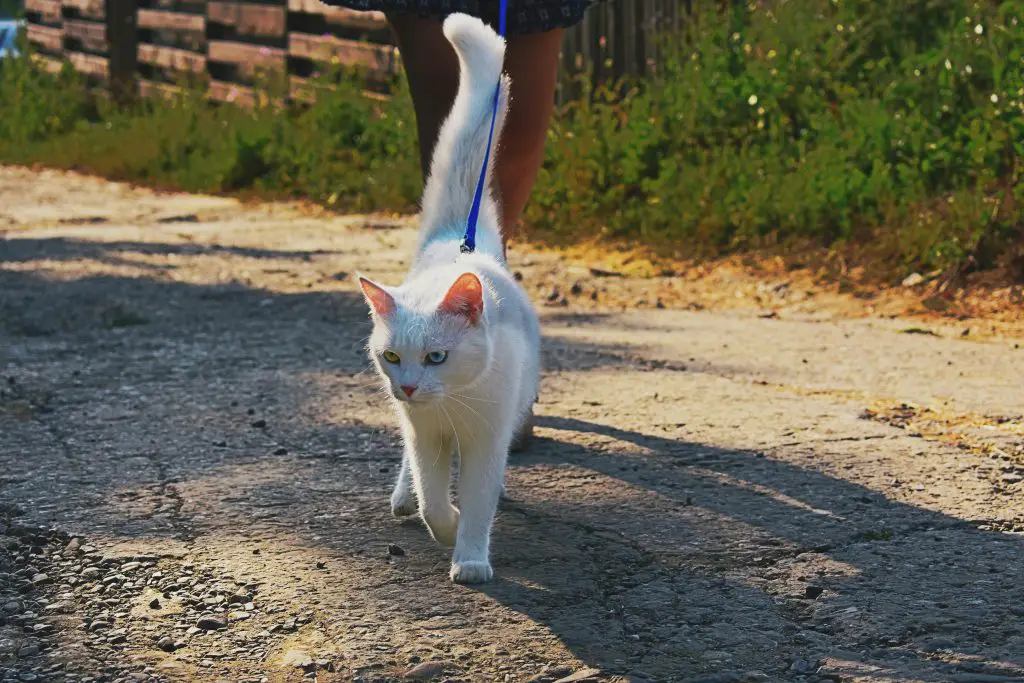
Choose a cozy, safe leash made for cats, allowing freedom of movement.
Guide your cat around the yard, rewarding good behavior with treats and praise.
This builds their confidence and helps them learn their boundaries.
Choosing the Right Leash
Selecting the right leash for training your cat to stay within your yard is crucial. The leash length should be between 4 to 6 feet, providing enough space for exploration without losing control.

Choose a lightweight, durable material like nylon or polyester for strength and comfort. Ensure the harness fits snugly but not too tight, allowing you to slip two fingers between the harness and your cat’s body.
Look for padded straps for added comfort to encourage positive behavior during training.
Gradual Boundary Training
Start by gently guiding your cat to the edges of your yard on a leash, helping them explore while gently redirecting if they wander too far. This process establishes clear boundaries and safe zones.
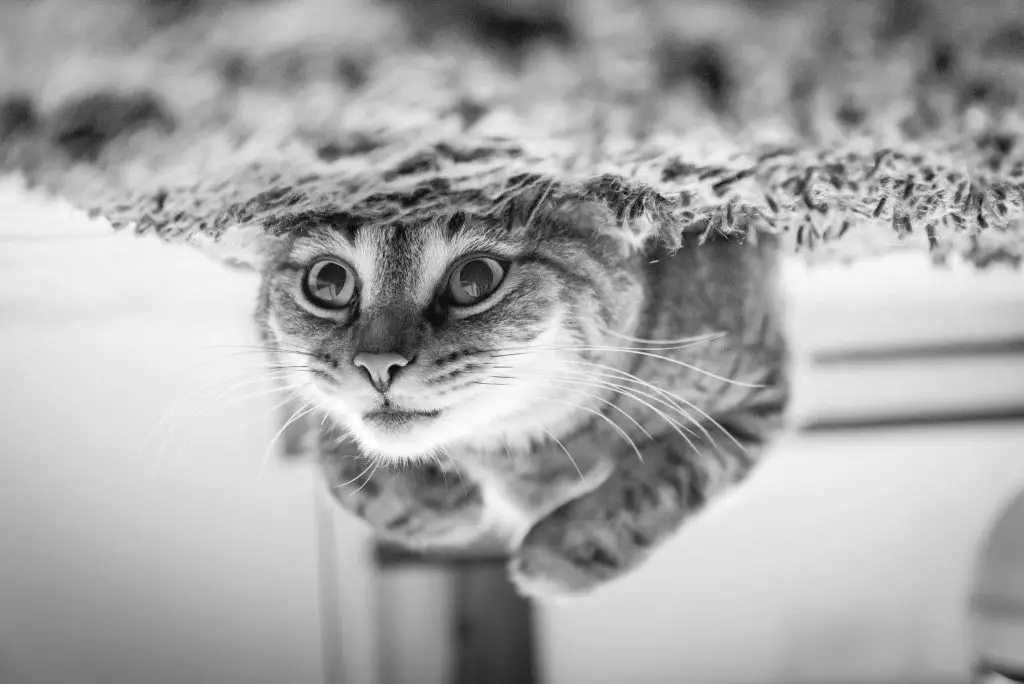
Use clicker training to reinforce positive behaviors when your cat stays within the designated area. Click and treat when they follow your guidance.
Remember to be patient and consistent, as cats may take time to grasp the boundaries.
Incorporate indoor enrichment activities to keep their mind engaged and align outdoor behavior with indoor habits. Pay close attention to your cat’s reactions and pause training if they show signs of stress.
Understanding their behavior is key to successful border training.
Trending in Cats:
With time and these techniques, your cat will learn to enjoy the yard safely.
Positive Reinforcement
Positive reinforcement, like clicker training and treat rewards, is a great way to encourage your cat to stay in your yard.

Start by clicking and offering a treat to associate the sound with a reward. Reward your cat with a treat every time they stay within the yard boundaries.
Gradually increase the time before offering a treat to modify their behavior. Consistent training sessions are key for your cat to learn quickly. Also see Tips For Clicker Training For Cats To Stop Bad Behavior.
Be patient and empathetic to ensure your cat feels safe and happy in their outdoor space.
Create a Safe Space
Ensuring your cat’s comfort in your yard is key to keeping them safe and happy. Set up a cozy spot with shady areas, climbing structures, and hiding spots to cater to their natural instincts.

Supervise your cat outdoors initially and use positive reinforcement like treats or affection to encourage them to stay within the designated area.
Indoor enrichment is just as important as outdoor space. Provide toys, scratching posts, and interactive play to keep your cat entertained and less likely to wander outside.
Monitor and Adjust
Consistently monitoring your cat’s behavior is key to keeping them safe within the yard. Track their movements daily and pay attention to any signs of escape attempts or areas of interest outside the boundaries.

If your cat keeps eyeing a specific spot, consider reinforcing it with barriers or other deterrents. Additionally, make sure to regularly check the yard for any weak spots in the boundaries and provide positive reinforcement when your cat follows the rules.
Frequently Asked Questions
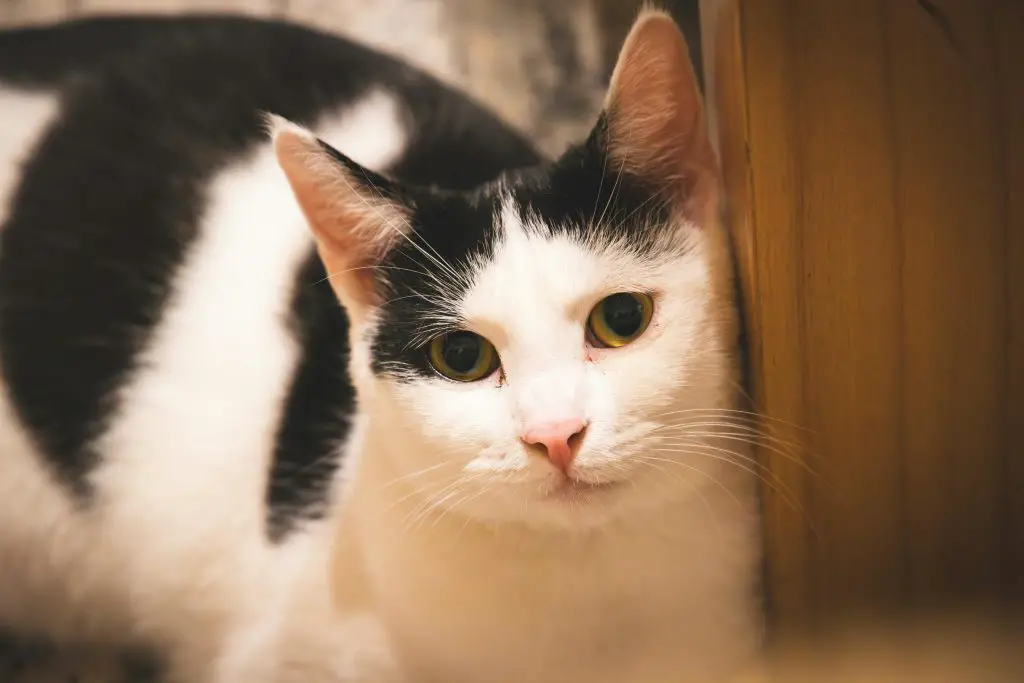
Yes, keep in mind that different weather conditions can impact your cat’s outdoor training. Rainy days may require adjustments to your training plans, and windy weather can make it more challenging to maintain consistency.
Be flexible with your schedule to work around these factors for more successful training sessions.
Think of your yard as your cat’s special kingdom. Set up deterrents and reinforce boundaries to keep other animals at bay.
Try using scent markers and keeping a close eye on your outdoor space to ensure your cat’s safety and peace of mind.
Some cat breeds are more receptive to training techniques, with Siamese cats often showing exceptional progress. However, each breed comes with its own unique challenges.
By consistently applying tailored tips, you can effectively address the specific needs of different breeds during training.
If your cat seems scared of the yard, take it slow and use treats to encourage positive associations. If the fear continues, consider consulting a professional for guidance. Remember to be patient and understanding as you help your cat feel more at ease.
When neighbors raise concerns about your cat’s presence on their property, open communication is key. By discussing boundaries and sharing your plans to address the issue, you can work towards a mutually beneficial solution while also being mindful of any legal considerations.
Taking an empathetic and logical approach can often lead to a positive resolution for all parties involved.
Conclusion

So, you’ve done your best to make your yard cat-friendly. With barriers and positive reinforcement, you’ve created a safe haven.
Yet, your curious cat still eyes the neighbor’s yard for fun. Remember, their nature drives them.
Your empathy and adaptability will keep them safe, even on little adventures beyond your sanctuary.
